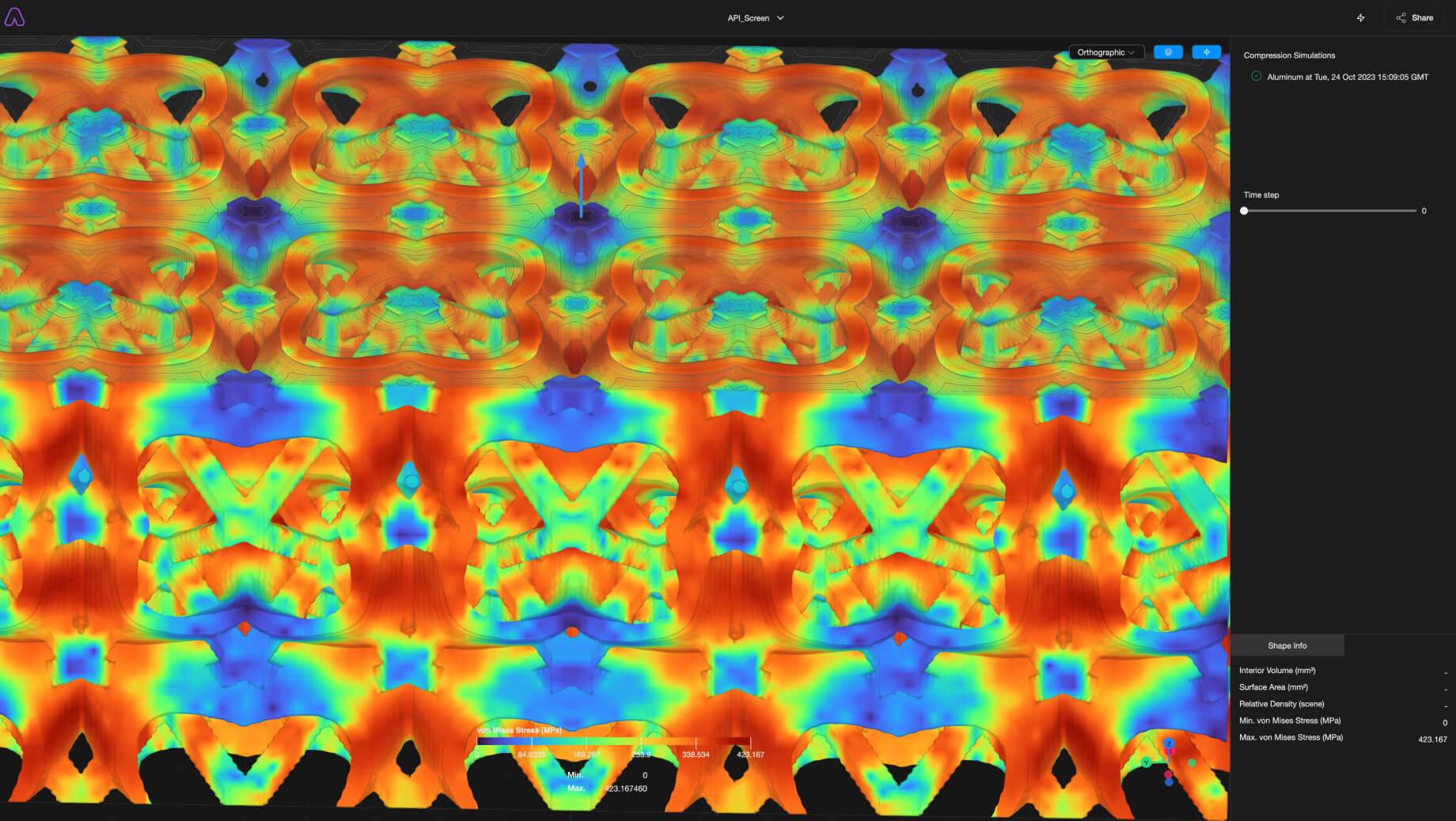Hyperelastic materials are closely linked to 3D printing because they offer unique properties that are well-suited for this technology. By using hyperelastic materials, 3D printing allows for the creation of intricate and flexible components that were previously difficult to produce using traditional manufacturing methods. These materials, such as rubber-like polymers including TPU, are ideal for making shoe insoles, sporting equipment, gaskets, seals, and many other applications as illustrated by figure 1. Furthermore, 3D printing enables the customization of prosthetic devices, athletic gear, and footwear, providing a tailored fit and enhancing user comfort.

Simulation vs Experimental Compression Test
Understanding the behavior of hyperelastic lattice designs can be a lengthy process, involving multiple steps such as generating the design and conducting mechanical compression tests to obtain the stress-strain diagram. However, simulation offers a faster and more cost-effective approach to understand lattice behavior. One major challenge in this process is meshing the lattice structures and transferring them to another software tool for accurate simulation and visualization, which can be time-consuming.
Having the capability to simulate and visualize the deformation of complex hyperelastic lattices within a single app provides an efficient workflow for teams. The video below demonstrates the experimental hyperelastic functionally graded lattice structures presented by Niknam and Akbarzadeh [1]. It showcases how accurate simulations can predict deformation, stress-strain curves, and densification when executed correctly. With Metafold Simulation, researchers and engineers can effectively analyze the structural behavior and performance of complicated hyperelastic lattice designs, enabling them to make informed decisions in the design process.
Hyperelastic behavior
Hyperelastic materials, such as polymers and elastomers, have the unique ability to stretch significantly and return to their original shape when the load is removed. The choice of deformation theory depends on the extent of deformation. For minimal deformation, the infinite strain theory is suitable and commonly used in applications like civil engineering. However, for substantial deformation, the finite strain theory is necessary, especially for elastomers and materials undergoing plastic deformation. Hyperelastic material models, such as the Arruda-Boyce, Mooney-Rivlin, Neo-Hookean, Ogden, and Yeoh models, are derived from the strain energy density function and deformation gradient invariants. These models effectively capture the nonlinear behavior of materials under large deformations. Experimental data and a comparison of three different models are shown in Figure 2
Calibrating hyperelastic material models is a challenging process that involves adjusting model parameters to match experimental data. This requires conducting deformation tests and fine-tuning the parameters to improve model accuracy. Open source software tools like WELSIM can assist in model calibration. The choice of tests depends on the specific model and material behavior being studied. The calibration process is time-consuming and complex, requiring a deep understanding of material response and the chosen model's limitations. However, accurately calibrated hyperelastic material models are crucial for predicting the behavior of elastomers and other highly deformable materials. More information about the hyperelastic material models calibration can be found PolymerFEM website.

Validated Hyperelastic Material Models with Metafold
Leading material producers, including EOS, BASF, and Carbon, offer a variety of hyperelastic materials for different applications. When exploring different designs and material models, simulation can be a cost-effective and efficient solution, especially when using validated material models. For instance, in my case, I wanted to compare the behavior of different materials when compressing graded Kelvin lattice structures. I conducted a quasi-static compression test and stopped at 4% strain. As expected, the three different materials exhibited different von Mises stresses, indicating their resistance to compression and understanding their relative stiffness and compliance. By Running multiple simulations in parallel in the cloud enables swift testing and evaluation of different combinations, making the process more productive. To learn more about the validated material models and the meshless cloud-based simulation, visit Metafold and get started for free.

[1] Niknam, H., & Akbarzadeh, A. H. (2020). Graded lattice structures: Simultaneous enhancement in stiffness and energy absorption. Materials & Design, 196, 109129.
[2] Dong, X., & Duan, Z. (2022). Comparative study on the sealing performance of packer rubber based on elastic and hyperelastic analyses using various constitutive models. Materials Research Express, 9(7), 075301.



